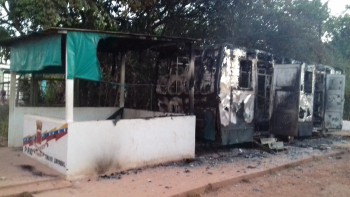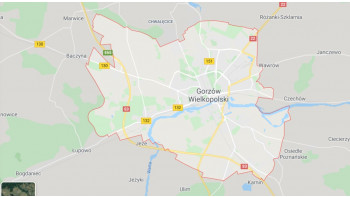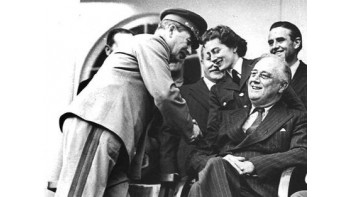At the same time, the main part of the event remained behind the scenes as journalists were kindly asked out. The behind-the-doors part of the virtual meeting was entirely dedicated to kickbacks on the sales of military assets that are considered obsolete for the Russian army and emptying the country's arsenals (depots and warehouses), getting rid of unsuitable property.
Being an apparently excellent idea of selling the surplus of Soviet-era leftovers to fill the state coffers, it has ultimately turned into a new form of enrichment of certain "comrades", exactly as described in the Lord of War movie. In many respects, the film show precisely how things go down in Russia: besides that truly outdated stuff they also sell arms that could still do a great service. After all, where a "suitcase full of cash dollars" changes a lot.

The story dates back to September 2014, when the Russian defense ministry drew a plan to reform by 2020 the military logistics system. The plan envisaged liquidation of nearly 400 old depots to replace them with modern production and logistics complexes (PLCs). It would be logical, they suggested, if all military assets be stored on the PLC premises: from uniform and foodstuff to spare parts and assemblies for tanks and other hardware. Each military district was supposed to host six such PLCs tied to the army groupings' deployment sites. The pretext for such move was also quite understandable: the existing system for army property and ammo storage has more than once led to major emergencies, with human casualties.
The Kommersant newspaper on February 29, 2016, published an article by Ivan Safronov, entitled "The Defense Ministry is swapping warehouses for complexes. Military equipment and materials will be stored in a new way," covering the defense ministry's ambitious plans to create 24 large transshipment and logistics complexes.
The problem is, it's simply impossible to find any reliable information on the number of PLCs actually built. There is plenty of scattered data on contracts or construction works in Yekaterinburg (the deal worth RUB 22 billion), Vladivostok (RUB 26 billion), Novosibirsk (RUB 26 billion), Khabarovsk (RUB 26 billion), Kaliningrad (RUB 18 billion), and Arkhangelsk (RUB 15 billion). But so far only one such PLC has been put into operation – the one in Naro-Fominsk just outside Moscow, of which the defense ministry proudly boasted in its 2019 report published in January 2020. Now, the thing is that the transition program, which was supposed to be fully implemented this year, was thwarted. Despite those hundreds of billions of rubles allocated, it has no chance of being completed before the deadline. The new benchmark is 2025, but there are no guarantees, naturally.

The first problem is that someone has already embezzled the money or is just getting to it. But even this issue doesn't appear to be so terrible because the old "Soviet" warehouses get disbanded only after the new ones are put in place so there's seemingly no real problem: the army is safely provided with everything necessary… But the "reform pundits" have managed to make a mess here, too, while the developments really do remind of the Lord of War plot. Their logic is: "We'll just sell whatever we can."
The process was once again launched by the Russian defense ministry, which in June 2015, shortly before the stage of cleaning up the depots that were seen as soon-to-become unfeasible, announced the total sale of unused assets still stored there.
The volumes were truly stunning. The initial catalog of assets put up for sale was 102 pages-thick, including assets ranging from quilted jackets and army boots to vehicles and even warships of the Northern and Baltic fleets.
At this stage, everything seemed logical and in full compliance with the law, as the main bulk of these assets was being sold within Russia. Lots of corresponding ads can still be found in the Russian segment of the internet. It seems, however, that it just wasn't enough for the hustlers. The situation changed with the not-so-legal supplied of Russian weapons to Syria through the so-called "Balkan corridor", exposed by the Western intelligence agencies. The deliveries were intended both for Syrian government troops and various Russian private military companies operating in the region – including the infamous Wagner. One shouldn't forget the warzone in eastern Ukraine. After all, only the most naïve would swallow propaganda tales about "locals" just finding weapons and ammo "hidden in coal mines."
Loads of munitions, weapons, and military hardware, mainly from storage depots, suddenly turned out to be in demand in various hot spots worldwide. So it started pouring there – not uncontrollably but definitely under weaker-than-usual control – to defend Russia's "forward bridgeheads". From here, the scheme is rather clear to anyone who has lived in the Soviet Union for at least a short period of time: officials report "shrinkage", "drying-up" or other issues with goods being delivered, including through recognizing part of the batch as "substandard" ... only to later still sell the stuff, especially when it's weapons. After all, who will be checking thoroughly the real condition of arms being sold in the heat of the moment, especially when it comes to a "full-blown stream" of supplies. Indeed, these weapons "pop up" from time to time in different parts of the globe, but remains really difficult to determine who, how, and when sold them as too much has been supplied through shady schemes.
This is precisely how new lords of war arose, having already made billions. And it doesn't matter whether these masterminds are on active military service or beyond – they have all dealt a huge blow to Russia's defense capability: plenty of older weapons have been sold while newer are yet to be produced… But for some reason it seems that no one really cares about the whole thing and no thorough investigation is to be expected. As usual, hustlers have probably delivered on kickbacks to all the right people in all the right offices – and this is where the real Russian problem lays, perhaps the main one...

















